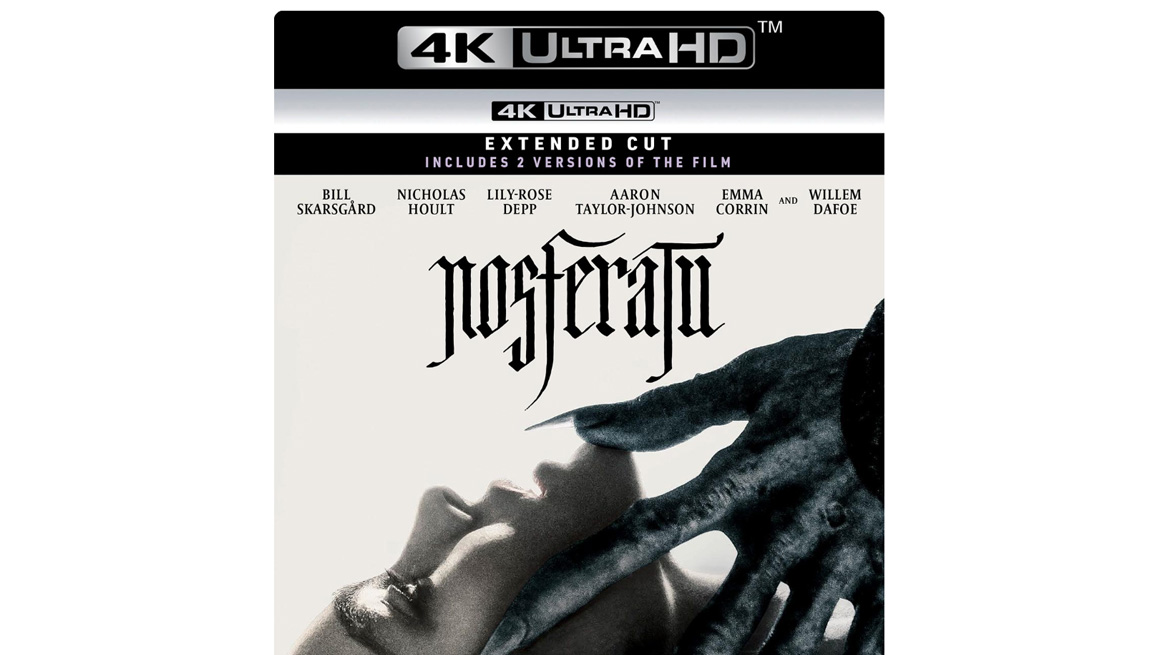TL;DR
Robert Eggers' *Nosferatu* is a visually stunning and atmospheric reimagining of the silent horror classic. While Bill Skarsgård shines as the unsettling Count Orlok and the film boasts exceptional UHD presentation and Dolby Atmos sound, its pacing can feel extended, and deeper character empathy is sacrificed for visual grandeur. Despite its flaws, this reviewer hails it as Eggers' most successful film to date. Dive into the shadows and discover if this gothic tale will captivate you – read on for the full breakdown!
Nosferatu is set in 19th-century Europe and follows Thomas Hutter (Nicholas Hoult), a young real estate agent dispatched to an isolated and foreboding location to finalize a deal with the enigmatic Count Orlok (Bill Skarsgård). Upon his arrival, he discovers that Orlok is a vampire with an unsettling fascination for Hutter’s wife Ellen (Lily-Rose Depp). Thomas must now endeavor to thwart Orlok’s advance, a task that proves far more challenging and dangerous than he could have ever imagined.
Nosferatu is a reinterpretation of F.W. Murnau’s classic 1922 silent film, whose survival owes much to a single copy preserved in France. This situation arose because the German filmmakers, unable to secure the rights to Dracula, proceeded with their own adaptation of the novel, altering character names. Bram Stoker’s widow, however, was not deceived and successfully sued them for copyright infringement, resulting in a court order for the destruction of all existing copies. Fortunately, not all copies were eradicated, allowing the original film to be enjoyed over a century later. Numerous remakes have since been produced, and this latest iteration joins their ranks.
Director Robert Eggers’ debut film The Witch (2015) is the sole entry in his filmography that this reviewer has not seen. While significant portions of The Lighthouse (2019) were compelling, and The Northman (2022) offered glimpses of brilliance, a common thread throughout his films is a tendency toward extended runtimes. Nosferatu similarly exhibits this trait, and would have benefited from a more concise edit. On the UHD release, two versions of the film are included: the theatrical cut and an extended version. This additional content, however, amounts to only two short scenes, extending the total runtime by approximately four minutes.
The casting is consistently strong, with Bill Skarsgård delivering yet another impressive performance. Behind significant layers of makeup, he sculpts a distinct character, embodying an intensity comparable to his work in the IT films. Nicholas Hoult and Lily-Rose Depp capably anchor the narrative. Adding further depth to the ensemble, Eggers’ frequent collaborator Willem Dafoe also makes an appearance.
A notable aspect of Nosferatu, consistent with Eggers’ directorial style, is a heightened focus on visual aesthetics at the expense of deeper character empathy. The narrative momentum never fully ignites; instead, events unfold, and the viewer may find themselves observing rather than deeply connecting with the unfolding drama. Nevertheless, this reviewer considers Nosferatu to be Eggers’ most successful film to date, particularly towards its conclusion, though a stronger emotional resonance with the characters would have further elevated the experience.
Image Quality: The UHD version of Nosferatu delivers an outstanding visual experience. The film is presented in 4K (2160p) with support for both Dolby Vision and HDR10, providing a deep and nuanced image with exceptional contrast. Eggers and cinematographer Jarin Blaschke have created a visual style that masterfully balances shadows and light, crafting scenes that resemble painterly compositions. Dark scenes, which dominate the film, are rich in detail and successfully avoid the common murkiness that can occur in less advanced transfers. The colors are notably subdued, especially in night scenes, yet maintain integrity without any bleeding between dark and light tones.
Audio Quality: The soundtrack, mixed in Dolby Atmos, delivers an immersive soundstage that significantly enhances the film’s unsettling atmosphere. Dialogue is crisp and clear, naturally placed within the soundscape. Robin Carolan’s score is both subtle and menacing, while the sound design effectively utilizes silence as well as disquieting sounds. The Atmos channels are expertly employed to create a profound sense of presence, particularly in scenes where Orlok moves through corridors, and the ship sequences are especially impressive.
Bonus Features: Over 40 minutes of behind-the-scenes content and deleted scenes. A significant addition is the inclusion of an audio commentary.
Summary: Nosferatu (2024) is a noteworthy film that is both evocative and atmospheric, though somewhat overlong. Despite its pacing, this reviewer considers it Eggers’ most accomplished work to date. The UHD release is exceptionally well-produced, which further elevates its overall assessment.
SF Studios sent review copies for this test. Material providers have no editorial influence on our tests; instead, we always write independently with our readers and consumers in mind.

